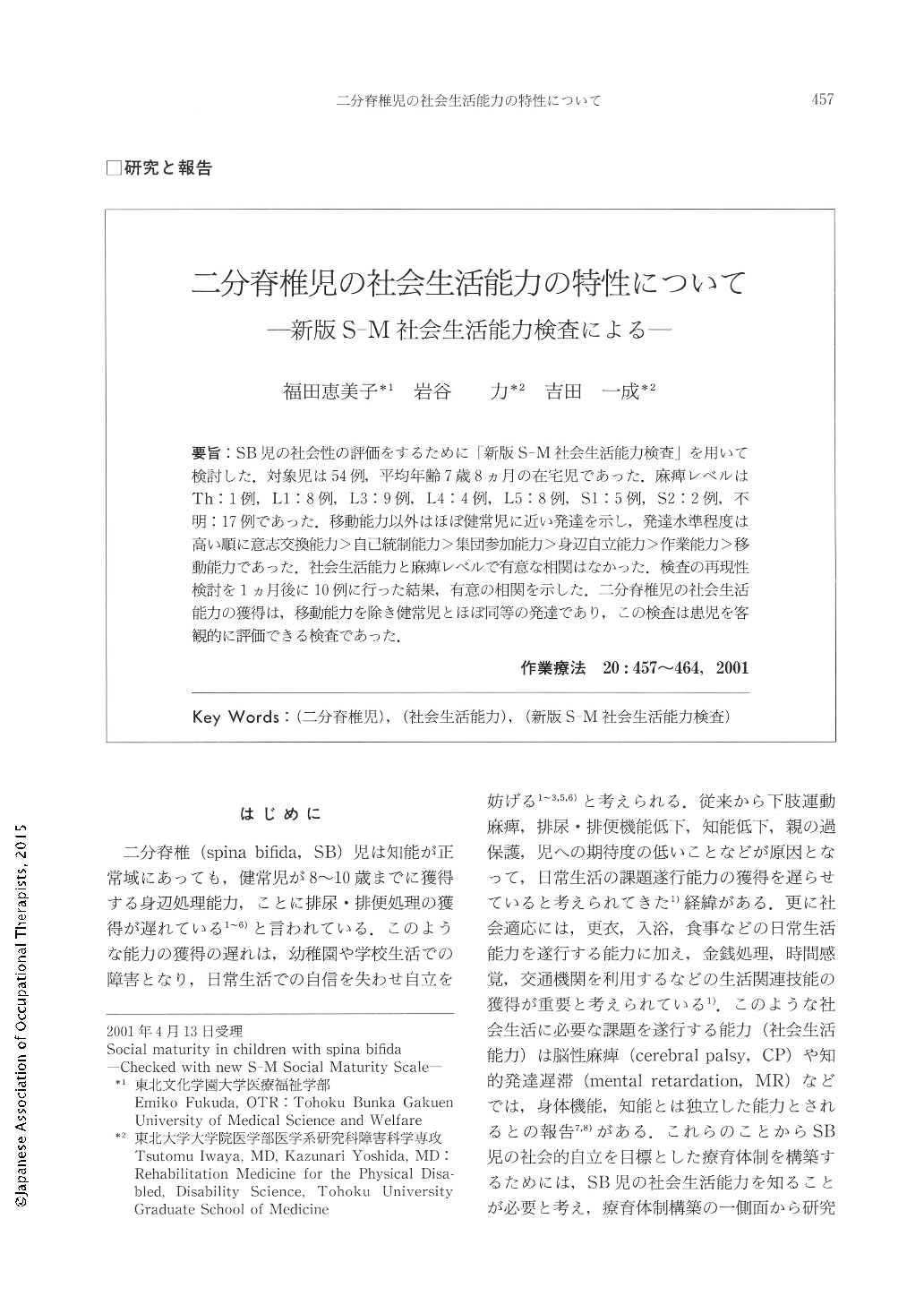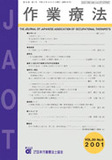Japanese
English
- 販売していません
- Abstract 文献概要
- 1ページ目 Look Inside
- 参考文献 Reference
要旨:SB児の社会性の評価をするために「新版S-M社会生活能力検査」を用いて検討した.対象児は54例,平均年齢7歳8ヵ月の在宅児であった.麻痺レベルはTh:1例,L1:8例,L3:9例,L4:4例,L5:8例,S1:5例,S2:2例,不明:17例であった.移動能力以外はほぼ健常児に近い発達を示し,発達水準程度は高い順に意志交換能力>自己統制能力>集団参加能力>身辺自立能力>作業能力>移動能力であった.社会生活能力と麻痺レベルで有意な相関はなかった.検査の再現性検討を1ヵ月後に10例に行った結果,有意の相関を示した.二分脊椎児の社会生活能力の獲得は,移動能力を除き健常児とほぼ同等の発達であり,この検査は患児を客観的に評価できる検査であった.
The objective of this study is to examine the new S-M Social Maturity Scale in order to assess social maturity in children with spina bifida. Subjects include 54 children living at home, with the average age of 7. 8. The number of cases for each level of paralysis is as follows: one Th, eight L1, nine L3, four L4, eight L5, five S1, two S2, and seventeen unknown levels. Except the ability for locomotion, the developmental level of those children was almost as high as that of normal children. When ranked according to high priority, communication level is the highest followed by self direction, and then socialization comes next. Selfhelp comes forth, and occupation is the fifth followed by locomotion. No significant interrelation could be seen between social maturity and paralysis level. However, series of tests and re-tests for ten cases after a month showed significant interrelation between the social maturity and paralysis level. The result leads to the conclusion that the new S-M Social Maturity Scale is an objective assessment scale for children with spina bifida.

Copyright © 2001, Japanese Association of Occupational Therapists. All rights reserved.


